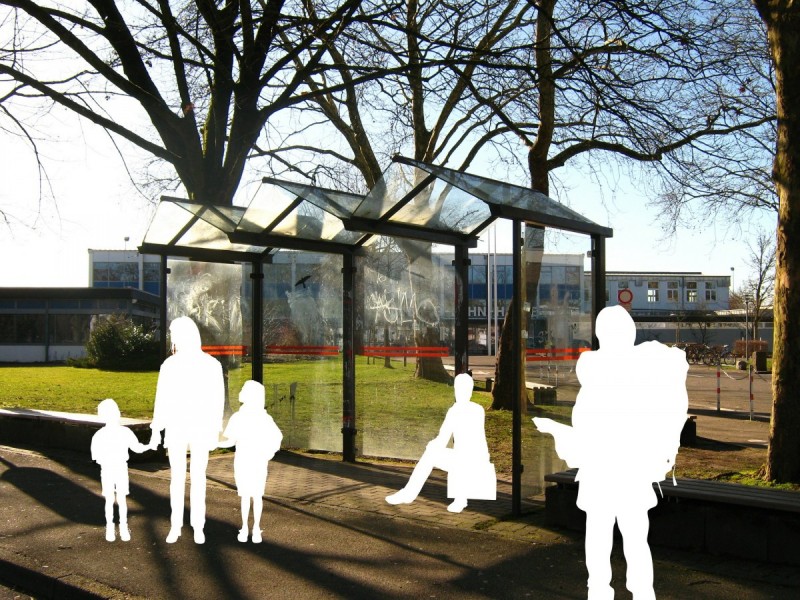
This article was first published on June 21, 2017. This is still a relevant discussion, so we are sharing it again.
Agencies and officials often sort transit riders into two groups: “captive” and “choice.” This is a false dichotomy that perpetuates inaccurate assumptions about who rides transit and what their motivations might be.
And for the average American, “captive” versus “choice” seems logical enough: People who drive have a choice between driving and public transit. People who don’t drive, for whatever reason, have no choice, because, in the absence of a car, transit is the only option. Car ownership, after all, is aspirational for low-income residents in high-poverty neighborhoods whose homes are segregated—by a long history of discriminatory land-use planning—from where they work.
In 1962, Louis Keefer presented at the forty-first Highway Research Board annual meeting. There’s little information about Keefer himself out there—he was one of the many mid-century planners authoring treatises on planning strategies for a rapidly changing, increasingly auto-centric America.
But his paper, “Characteristics of Captive and Choice Transit Trips in the Pittsburgh Metropolitan Area,” should be noted for being one of the earliest explanations of “choice” and “captive” riders. The former, according to Keefer, are “those who comprise a captive audience” given that they are “unlicensed to drive or lack[ing] access to a car,” while the latter are “those who could have driven but chose transit instead.
“These differences between captive and choice trip-making,” says Keefer’s abstract, “should prove useful in estimating the future potential market for public transit.”
This was prescient: “Captive” versus “choice” has burrowed deep into the brains of transit planners and administrators over the past 50 years. Unsurprisingly, given their likely origins at an HRB meeting, the two terms are a regular couple in academic writing, whether papers are addressing their polarization specifically or tangentially.
What “captive” and “choice” mean to transit planners today
Our built environment has sprawled since 1962, and the implied qualities of “captive” and “choice” riders have sprawled along with it. “Captive,” in agency-speak, now means less a captive audience than captive individuals: people who are too poor to own a car or obtain a license, and are shut out of the mode of driving entirely as a result. “Choice” means less a group of individuals who “could have driven but chosen transit instead” than choice in most literal sense—of very good quality. “Captive” riders are disadvantaged. “Choice” riders are privileged, and privileged by transit agencies, whose officials often talk in terms of attracting them away from their cars to ride transit. This is the linguistic inverse of Keefer’s original definition.
It is critical that we shift away from driving single-occupancy vehicles. But fixating on convincing people who drive to switch to transit is almost always done without making service more frequent or more reliable for existing riders. And it’s rarely paired with policies that make driving and parking less attractive by making them more difficult and more expensive.
Further, calling riders “captive” robs them of their agency. There are very few circumstances under which individuals truly have one choice, and one choice only. More likely, people—even the most destitute, and even the most disadvantaged—are choosing between a bad option and a worse option. (You can hear me discuss this in the context of Cleveland’s regional transportation issues at the 54-minute mark of this podcast. This post arose after I tweeted an excerpt of an active transportation platform that I and others in Cleveland are working on.)
There are no captive riders
The kinds of people that transit agencies assume are “captive” have just as much of a choice as anyone else, and agencies would do well to remember that they, too, can be turned off by poor service. Someone whose bus is consistently late might save up or take out payday loans to finance a car. They might bike or walk to work. They might spend more money on a cab or rideshare. Moving or quitting their job, while seemingly drastic, may become preferable. They may depend on familial and social networks for rides or access to cars.
High-frequency, reliable service that takes people where they want to go demonstrates that transit agencies are meeting the needs of their existing riders. It’s also what attracts people who might otherwise drive, according to TransitCenter’s 2016 “Who’s On Board?” report. “Far from being ‘captive,’ transit riders without cars are in fact very sensitive to the quality of service,” wrote Streetsblog, summarizing that report. “So-called ‘captive’ riders have other choices available, like biking, taxis, and borrowing cars, and most do take advantage of them — almost two-thirds of car-free transit riders had done so in the last month.”
In a 2010 post, Jarrett Walker put the term on an unhelpful-word watch: “To call any of these people “captive riders” is not just insulting, it can breed a false complacency on the part of the transit agency. There are very few riders that you absolutely cannot lose no matter how terrible your service is. I’ve always felt that the best discipline for a transit agency is to treat all of their customers as though they’ve made a free choice.”
If we believe in the public benefit of public transit, it is in the interest of agencies to respect their riders—all of them, regardless of their motivations for riding. And it is incumbent on politicians, on administrators, and on us to fight to broaden and improve transportation options. As few people as possible should have to choose between something bad and something worse.
"choice" - Google News
June 30, 2020 at 11:07PM
https://ift.tt/3dLUcnC
Transit riders have a choice - Greater Greater Washington
"choice" - Google News
https://ift.tt/2WiOHpU
https://ift.tt/3c9nRHD
Bagikan Berita Ini














0 Response to "Transit riders have a choice - Greater Greater Washington"
Post a Comment